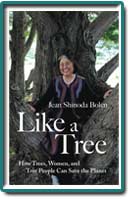Preface
In the decade that Close to the Bone has remained in print after its initial launch, it did so mainly by word of mouth. I heard from people who said it affected them deeply, was most helpful, and even that "it saved my life." These were comments from a select audience of people, those impacted by a life-threatening illness and those who applied it to other life-altering situations. Very little has gone out of date because the perspective will never be outdated. A diagnosis such as cancer or waking up in an Intensive Care Unit after a heart attack, or any other close call brings home the reality that life is a terminal condition. Most of the time, people don't give much thought to the big question about the meaning of life and the shortness of time left before we die. Most people don't see a connection between what ails the body and the their soul's need for authenticity, love, and purpose. Or know that the mind has a powerful effect on getting well. Most people think that doctors have the final word about length of time remaining, and might think differently if they met people like themselves who once were given months to live, and years later are thriving. Medical journals educate physicians with statistical information and are not interested in stories about unexpected remissions and recovery. Yet stories can change beliefs and beliefs affect us at the cellular level.
Once we take soul seriously, a whole different premise opens up. If we have a soul--and this is one of the innate beliefs that human beings do have--then we are spiritual beings on a human path rather than human beings who may or may not be on a spiritual path. If so, what did we come to do or to learn? Who or what did we come to love? What might we be here, for? These are questions that only each individual can answer for herself or himself. Answers are what we know "in our bones." A life-threatening illness can be a wake-up call or a turning point or the beginning of a downhill spiral, as a midlife psychological crisis also can be. In either case, the outcome depends upon paying attention, becoming conscious of what truly matters to us, and acting upon what we know to save our life or heal our soul and our relationships. To be out of touch with soul, makes living an authentic, creative, interdependent, meaningful life impossible and if we are susceptible to expressing spiritual isolation and emotional pain through physical symptoms, we shall likely get sick.
Medical advances are remarkable and yet they also can create complacency about soul questions. A decade ago, AIDS was a fatal disease. Now that there are medicines for it, it can become an underlying chronic condition much like diabetes, heart and pulmonary disease. Before there were antibiotics, many bacterial infectious diseases were also fatal; the patient who survived often went through a crisis, in which the temperature could break and the person would live. Medical advances extend life for those privileged to have access to them, but they also make it easier to take life for granted and not question why we are here.
I made four significant additions to the original text and numerous minor changes. "Psyche's Journey" replaced "Harbinger of Truth" as a chapter title after I had more to say about the meaning of the four tasks in the myth of Eros and Psyche and the analogous difficulties that follow a diagnosis of a life-threatening illness. Since hope and the desire to live are supported by stories about what worked for people who outlived their prognosis, went into remission or made remarkable recoveries, I added more information and stories to "Sometimes We Need a Story." In "Soul Connections," there is a new section about circles with a sacred center which may extend life and are vessels for healing and soul growth. In the last chapter which I called "Musings," I reflect upon how the dreams of dying people and beliefs that human beings have held, perhaps forever, are about continuity of the soul. I tell about the events at the time my son died and how he was heard from after his death. The belief that death is not the end and experiences of numinosity--awe that comes when an invisible and divine reality is revealed or felt—is, I believe-- what distinguishes human beings from all other species. I also changed the subtitle of this revised edition from "Life-Threatening Illness and the Search for Meaning" to "Life-Threatening Illness and Soul," which is fitting.
The original publication date for the Scribner edition of Close to the Bone was October 2, 1996. I think of a book's "pub-date" as its birthday, the date it officially enters the world to have a life of its own. When I learned that October 2 is "Guardian Angel Day"on the Catholic calendar, this felt like a synchronicity. I thought about something I had heard: that when we pray for people, we are sending angels to be with them. Since my intentions are to help and heal, to make you less afraid, to encourage you to trust your inner wisdom and be fiercely true to what you know in your bones, this book comes with prayers. It tickles me to wonder whether this might mean that it will also come with angels.
Jean Shinoda Bolen
Mill Valley, CaliforniaSeptember 2006

